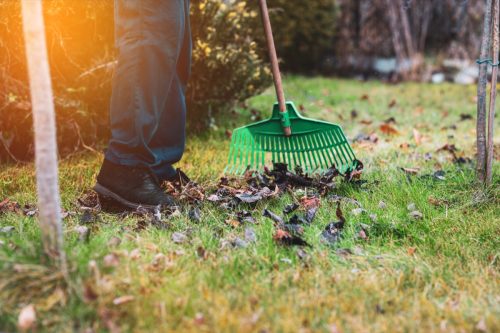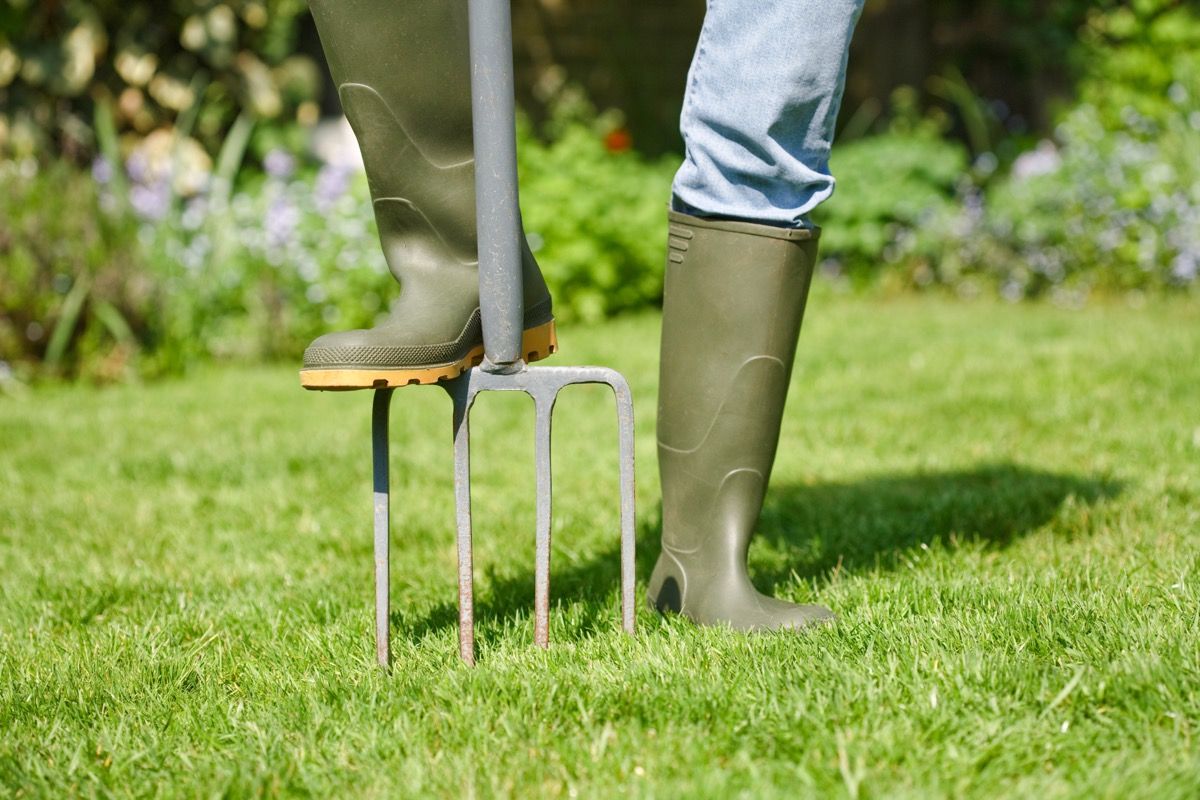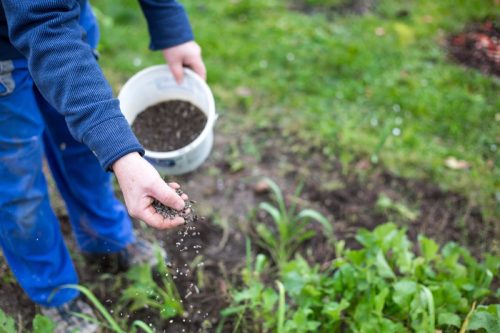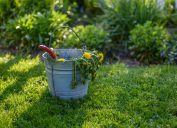5 Spring Cleaning Tips to Get Your Lawn Ready for Guests
Experts say these tips will spruce up your lawn, and have it ready for entertaining.

Winter is on its way out, and as the weather warms up, you're probably thinking about spring cleaning and a fresh start for the season ahead. This process isn't just isolated to the inside of your home—you also need to tend to your lawn, especially if it's been under a blanket of snow. Your grass and flowerbeds must be prepped to handle the heat of summer, and if you have any plans to host company for Easter, Passover, or other spring festivities, you'll want to ensure that your yard is set to impress. With that in mind, we spoke with lawn care specialists and crop scientists to find out how you can best prepare. Read on for five spring cleaning tips to get your lawn ready for guests.
READ THIS NEXT: The First Things Guests Notice About Your Kitchen, According to Experts.
1
Remove debris.

The first step in any springtime lawn maintenance is picking up any debris, experts say.
"Start by raking the lawn to remove dead leaves, twigs, and debris," Diana Cox, founder of The Gardening Talk, tells Best Life. "This process will allow air and nutrients to reach the soil, promoting new growth."
Jeremy Yamaguchi, CEO of Lawn Love, concedes that this process can be "tedious," but you'll be happy you went the extra mile.
"Over the last couple of months, your yard likely became full of fallen pine needles, leaves, pine cones, twigs/branches, and more. In many locations across the U.S., there was an uncommon phenomenon recently where leaves weren't falling until well into the winter, so for a lot of people, there are more leaves covering their yards right now than ever before," he explains.
It's not necessarily hard work, but it does take time, depending on the size of your yard. "Start early and do small-medium amounts at a time," Yamaguchi recommends. "This makes it much more manageable and is better for your back (and your sanity!). It's important to remove all of that debris so that your lawn is able to get the oxygen and sunlight it needs to be healthy and thrive in the spring."
2
Aerate your lawn.

Another important step is to aerate the soil. "This process involves making small holes in the soil to allow water and air to penetrate the surface," Cox says. "Aerating the soil will help water, air, and nutrients penetrate the root system, promoting healthy growth."
Aeration will also decrease thatch—a layer of dead grass and plant matter that accumulates on top of soil. According to Cox, thatch "prevents water and nutrients from reaching the root system, which can lead to brown spots and dead patches."
Eric DeBoer, PhD, agronomist with Simple Lawn Solutions, adds that around a half-inch of thatch is actually good for your lawn, but more than that needs to be removed.
"Excessive thatch buildup can harbor insect pests and fungus, and reduce oxygen, water, and pesticide movement into the soil," he says.
READ THIS NEXT: The First Things Guests Notice About Your Living Room, According to Experts.
3
Fertilize, fertilize, fertilize.

Fertilization is essential for grass growth, experts say.
"A couple of shots of nitrogen-based fertilizer in the spring can really help with the green color and growth of your lawn," DeBoer explains. "Additionally, consider a foliar application of a liquid iron-based product for a deep, lush green. If company is coming over in the spring, aim to make this application no more than 72 hours prior to guests arriving. Your lawn's response to the iron will typically be quick and potentially short-lived."
Experts also recommend determining the exact type of grass you have before choosing the right fertilizer for your lawn.
4
Do a low mow.

DeBoer also recommends "low mowing to jump-start the season." Think of it like a haircut—removing the top layer is essential to promote new growth. According to Cox, this can be one of your final steps.
How you go about mowing will depend on whether you have a cool-season lawn or a warm-season lawn. Cool-season grasses are green by mid-spring and stay active through the late fall, according to High Country Gardens. Warm-season grasses love sun—they won't green up until late spring and will "go dormant" by early to mid-fall. A lawn care specialist can help determine which kind you have, if you're not sure.
"Warm-season lawn owners, whose lawns have gone completely dormant during the winter, can drop their mower deck pretty low and remove all of the brown, deceased top growth to open up the canopy for new growth," DeBoer says. "This will also allow more sunlight to hit the soil surface, which can hasten the spring green-up of the lawn by increasing soil temperatures."
Cool-season lawn owners don't have to be "as aggressive," he explains. "But a couple of mowings lower than you typically mow during the summer can help remove any dank, old growth in the canopy and prepare it for fresh top growth."
For more home advice delivered straight to your inbox, sign up for our daily newsletter.
5
Add the finishing touches.

If you've truly taken care of your lawn, it's probably looking pretty good already. But there's always little improvements to be made before you have guests over.
Gene Caballero, co-founder at GreenPal, tells Best Life that you should edge your lawn for "a clean polished look."
"Use an edging tool or a spade to create a clean border between your lawn and any flower beds, walkways, or other areas," he recommends. From there, you should also prune and trim where you can.
"Prune any dead or damaged branches from your trees and shrubs, and trim any overgrown hedges or bushes," Cabellero says. "This will help promote healthy growth and give your yard a more manicured look."
Toby Schulz, CEO and co-founder of Lawn.com.au, also recommends using early spring to plant some "hardy perennials" or shrubs.
Once you've completed all these steps, you'll be left with a lawn that's guaranteed to wow company the moment they step in front of your home.





















